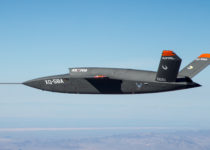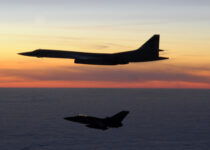Here’s Why Subsonic Cruise Missiles Are Worth Having Even If You Have The Quick Supersonic Ones
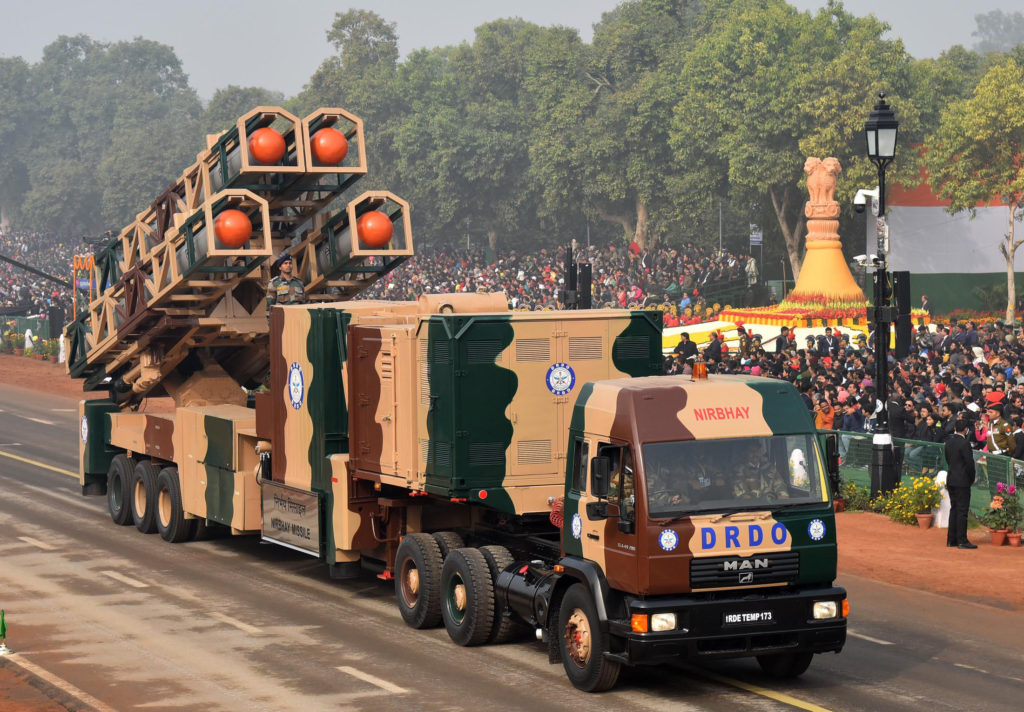
India already has Brahmos, which is the world’s fastest cruise missile at present, with a maximum speed of Mach 3. One might then wonder, why we are striving to develop a subsonic cruise missile. In fact, most countries that have supersonic cruise missiles also have subsonic ones. The reason is that there are certain advantages subsonic cruise missiles have over their supersonic cousins, which makes them indispensable. In this post, I list these advantages to make a solid case for having subsonic cruise missiles even if you have supersonic ones already in your inventory.
Payload Flexibility Of Subsonic Cruise Missiles
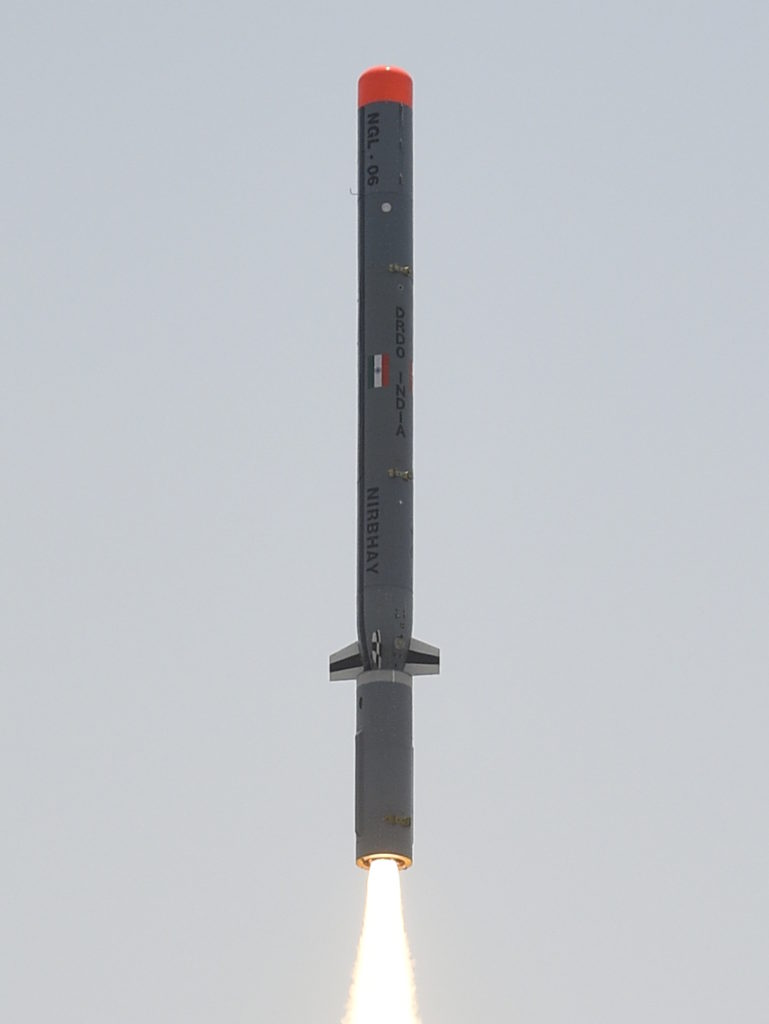
Subsonic cruse missiles can carry a wide variety of warheads, unlike supersonic cruise missiles, that usually carry a unitary warhead. This makes subsonic cruise missiles more versatile. Brahmos, for example, carries a unitary, 200 kg high explosive warhead. This warhead is useful in attacking ships and buildings like aircraft shelters, ammunition depots and fuel tanks, but it is useless against dispersed targets, like a bunch of tanks parked in the open at a staging area, a bunch of aircraft parked out on the tarmac at an airfield, or a bunch of tents. To attack such dispersed targets, you will need not unitary warheads, but submunitions.
Subsonic cruise missiles on the other hand, can carry a whole range of warheads, including submunitions. Not just this, they can carry larger warheads than supersonic cruise missiles. Tomahawk for example, can carry a 450 kg warhead, unlike the 200 kg warhead of Brahmos. This is likely because due to their low fuel efficiency, supersonic cruise missiles need to carry more fuel. Or maybe their engines and other parts are larger. Both of these factors would limit the space they can spare for a warhead.
The only warhead developed for the Nirbhay cruise missile at present is a high explosive unitary warhead. But it has been said that multiple different types of warheads would be developed for the missile in future. What types of warheads will be developed for Nirbhay has not been mentioned in public yet. But looking at other cruise missiles in the same class, we can make an informed guess. Shown in the video bellow is the BLU-108 submunition developed by Textron. Currently this submunition has been integrated in the CBU-105 cluster bomb (which has also been procured for the Indian Air Force for use by its Jaguar and Hawk I aircraft).
Each CBU-105 bomb carries 10 BLU-105 submunitions, and each of these submunitions carries 4 skeets, each containing a 0.9 kg shaped explosive. One CBU-105 therefore carries 40 such skeets, each of which can take out one tank, armored vehicle, railway locomotive, aircraft or other target. Since the skeet contains shaped explosive, all its explosive energy is directed at the target, instead of spreading in all directions, which is why a mare 0.9 kg of explosive is sufficient to take out the target. The skeet contains a laser sensor and an infrared sensor, which can be programmed to recognize specific targets like armored vehicles, locomotives or aircraft depending on the mission.
A single CBU-105 bomb can therefore, take out 40 tanks. And a single aircraft like the Jaguar can carry at least 4 CBU-105 bombs. This weapon, therefore, vastly amplifies the firepower of aircraft like the Jaguar, which will be tasked with air interdiction missions, ie. missions to take out enemy truck convoys supplying stuff to frontline troops, and enemy armored formations proceeding to the frontline. But fighter sized aircraft can only go so far into the enemy territory, not just because they risk being shot down, but also because their combat radius often constrains them. Jaguar for example, has a combat radius of 815 km in hi lo hi flight profile, and 575 km in lo lo lo profile, without external fuel tanks.
Subsonic cruise missiles, on the other hand, have a range of over 1,500 km. This, coupled with the fact that they can be launched from ships and submarines as well, means that a cruise missile carrying submunitions like the BLU-108 could take out large numbers of armored vehicles and other equipment while they are still far far away from the theater of war, perhaps while they are parked in the open at a harbor, having been unloaded or waiting to be loaded onto a cargo ship, like in the image below.
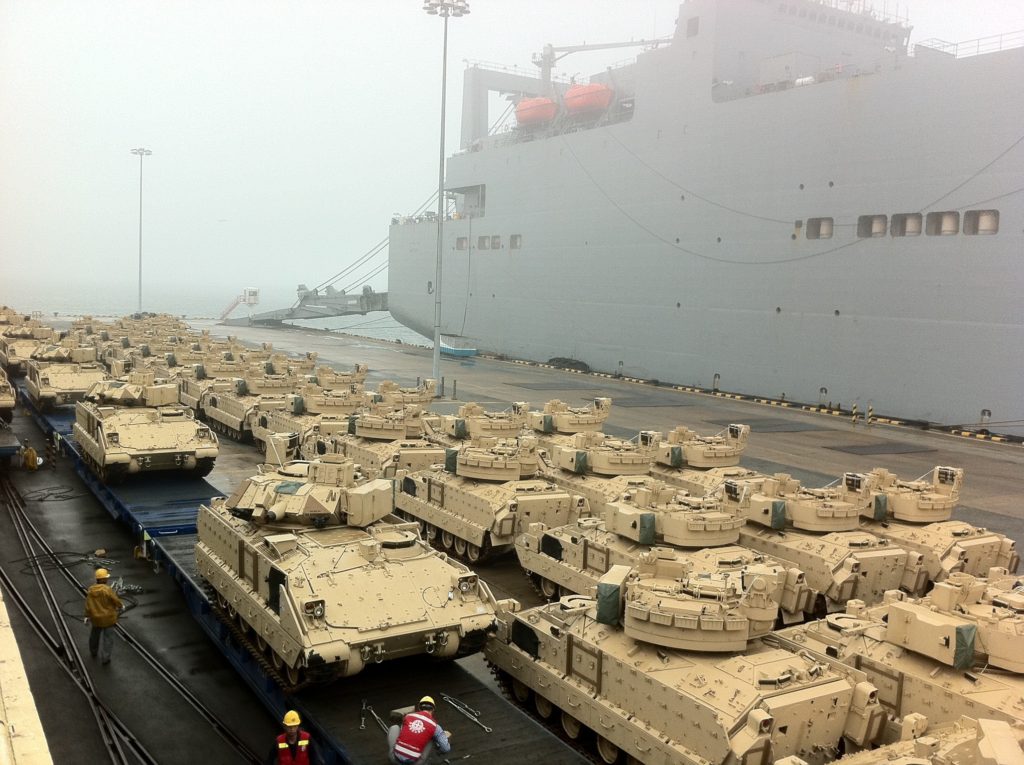
The BLU-108 type of submunitions are of course not the only type of submunitions that could be carried by subsonic cruise missiles. DRDO, for example, has developed atleast four different kinds of submunitions warheads for the Prithvi and Pralay ballistic missiles. The blast cum earth shock (BCES) submunitions are designed to damage runways and concrete structures, incendiary submunitions are effective against inflammable targets, and preformed fragmentation submunitions are effective against soft targets like enemy soldiers. These submunitions can also be used in combination to achieve desired effects. A combination of BCES and incendiary warheads, for example, can be effective against hardened fuel depots. Integrating these submunitions in cruise missiles like Nirbhay could be worthwhile.
Another type of warhead that can be developed for subsonic cruise missiles, is a unitary warhead that is rocket powered. This warhead enables subsonic cruise missiles to be as effective as supersonic ones in anti shipping role, because the rocket propels the warhead to supersonic speed after detaching from the subsonic part of the missile.
In the first image below, you see the conventional version of the Klub K cruise missile, with the blunt head carrying the conventional, unitary warhead. In the second image, you see the version of the same cruise missile carrying the detachable, rocket powered warhead, with a sharper nose to allow supersonic flight. This is a combination that gives the missile the best of both worlds. The subsonic stage gives it long range, and the rocket powered stage gives the warhead enough speed in the last phase of flight, to prevent interception by the target ship.
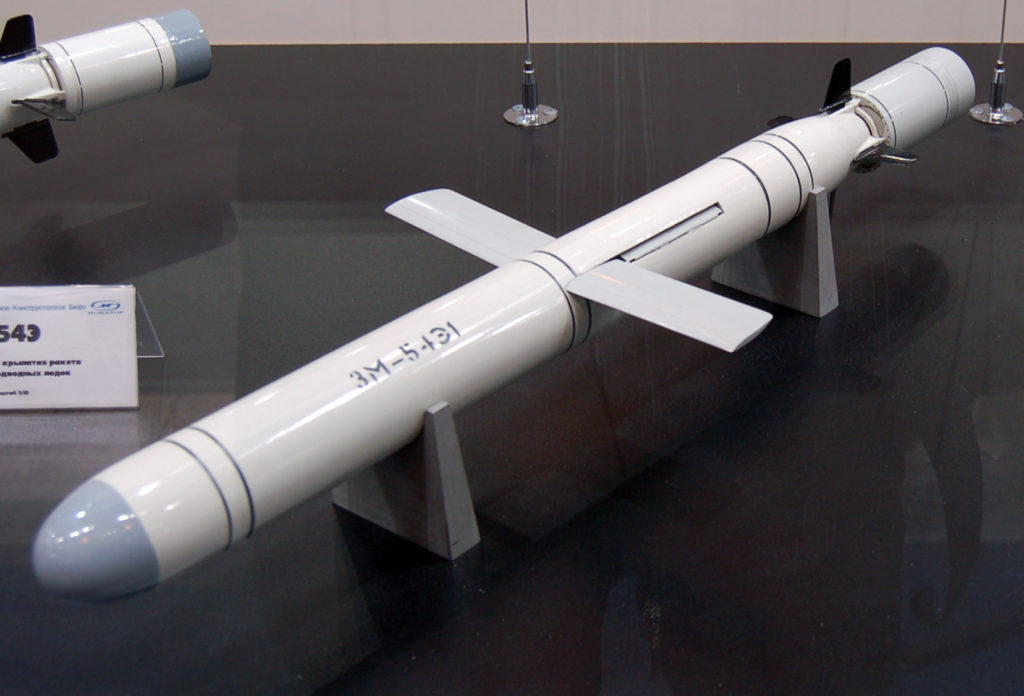
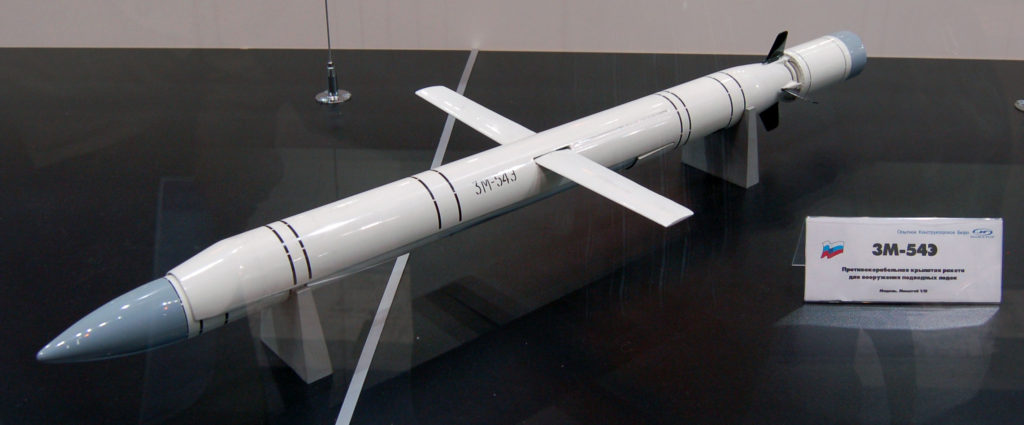
Then there are warheads with a shaped explosive charge, that are designed to enable penetration of hardened targets like hardened aircraft shelters, without requiring a significant amount of explosive. The basic concept of these warheads is the same as that for the BLU-108 warhead- the explosive is shaped in such a way that all the explosive force is directed in the same direction, instead of dissipating in all directions. One such warhead is the BROACH warhead, which is carried by the Storm Shadow/Scalp EG cruise missile, and was also being considered for use in the AGM-86D CALCM cruise missile.
The BROACH warhead is actually a two stage warhead. The first stage is a shaped explosive charge which cuts through the hardened shelter, and the second stage is a larger, conventional explosive charge that detonates after entering the shelter through the hole made by the shaped explosive. Such a warhead would enable subsonic cruise missiles to penetrate hardened structures that can normally be penetrated only by heavy supersonic cruise missiles like Brahmos, or by laser/GPS guided gravity bombs carrying much larger amounts of explosives.
There are also more exotic warheads that can be carried by subsonic cruise missiles. The CHAMP (Counter-electronics High Power Microwave Advanced Missile Project) is a cruise missile under development, that carries a directed energy payload, releasing a powerful EMP (Electromagnetic Pulse) to incapacitate the electronic equipment at the target.
The ideal targets for such a missile would be the command and control centers of the enemy, which are packed full of fragile computers. These buildings are too large to be destroyed by just one cruise missile, and they are also hardened in many cases. But a single CHAMP like EMP generating cruise missile could fry all the electronic equipment in them, rendering them useless. The video below shows how a missile like CHAMP is intended to be used.
Another kind of electronic warfare payload that can be carried by a cruise missile, is one that doesn’t fry the electronics of the target. Instead, it jams the enemy radars. A cruise missile carrying such a jamming payload would essentially be a flying EW pod. If one of the cruise missiles in a swarm carries such a jamming payload, it would jam the radars making it easier for the other missiles in the swarm, that would be carrying other payloads depending on the requirements of the mission, to reach their targets without being intercepted. In fact, a jamming variant of the SPEAR mini cruise missile is already being developed.
Then there is a payload for the tomahawk, that contains thousands of thin carbon fibers. This payload has been specifically developed to disable, but not destroy, the electric power plants and power grid of the adversary. It was used by the US against Iraq in the 1992 Gulf war. The cruise missile carrying this payload showers the carbon fibers all over the outdoor switching and transformer areas of a power plant. This causes a massive short circuit, shutting down the plant’s generators. In Iraq, this blinded the country’s command and control apparatus, as it depended on commercial electricity for its operations.
And then of course, there are the nuclear warheads, thermobaric warheads, and conventional, unitary high explosive warheads, that can also be carried by a cruise missile. These different payloads are the ones known in public. But its very likely that other, more exotic payloads are also in existence, or are being developed, that are not known to public. This diverse variety of payloads shows the immense versatility of subsonic cruise missiles, which can transport them over far greater distances than the fuel guzzling supersonic cruise missiles.
So far, all these different payloads have been developed for different subsonic cruise missiles. But its technically possible to develop a common subsonic cruise missile, that can accommodate all of these different types of payloads, making it a truly versatile system and also leading to economies of scale, due to a common platform.
Deployment Flexibility Of Subsonic Cruise Missiles
Cruise missiles in general are more easily deployble across platforms and environments, than ballistic missiles. This is owing to their smaller size. Thus, a ballistic missile TEL (Transporter Erector Launcher) typically carries just one ballistic missile, be it a short or medium range ballistic missile like DF-21, DF-26, Scud or Shaurya, or an ICBM like Agni 5 or Topol-M. A cruise missile TEL on the other hand, can carry multiple cruise missiles. A Bastion coastal defence system, for example, carries two P-800 missiles each, a Brahmos TEL carries three Brahmos missiles, and Nirbhay and Tomahawk TELs carry four missiles each.
This means that while four ballistic missile TELs would have to be deployed to hit four targets, only two Brahmos/ P-800 TELs or just one Nirbhay/Tomahawk TEL would have to be deployed to hit the same four targets. This reduces the logistical footprint of cruise missiles, making their ground vehicles not just easier to deploy but also harder for the adversary to detect. As you can see, however, this difference exists not just between ballistic and cruise missiles, but between supersonic and subsonic cruise missiles as well.
Only two or three Brahmos or P-800 missiles can be carried per TEL because being supersonic, are larger and heavier. On the other hand, four Nirbhay or Tomahawk missiles can be carried per TEL, as being subsonic, they are smaller and lighter. And despite being smaller in size, these subsonic missiles have almost double the range of the larger supersonic cruise missiles, and can also carry almost twice as large a payload. This deployment flexibility is not just seen with their TELs. As the video below shows, subsonic cruise missiles are small enough for a quad launcher carrying four of them to fit in a standard shipping container.
This opens up a world of possibilities when it comes to deploying these missiles. Quad missile launchers disguised as standard shipping containers can be carried by, and operated from, virtually any vehicle that carries these shipping containers, be it a commercial truck, a goods train, or a commercial container ship. This makes it all the more difficult for the adversary to locate and target the launchers of these missiles until its too late. The video above shows Klub K missiles being used in this way. But other subsonic cruise missiles could also be accommodated in standard shipping containers along with their launchers.
Range Advantage Of Subsonic Cruise Missiles
This has been mentioned before but it is relevant enough to discuss in detail. Due to their higher fuel efficiency, subsonic cruise missiles have much longer range than their supersonic counterparts. Brahmos, a supersonic missile, will have a maximum range of around 800 km. On the other hand, the Block III version of Tomahawk, a subsonic missile, has a maximum range of 1,700 km, and Block II variant of the same missile has a range of 2,500 km. In fact, AGM-129 ACM, another subsonic cruise missile that I have described below in this post, had a maximum range of a whooping 3,700 km. Such ranges are simply not achievable by the fuel guzzling supersonic cruise missiles.
This longer range has three benefits. Firstly, it allows you to hit targets much further away than the supersonic missiles. Secondly, it allows you to launch the missiles from further away from enemy territory, where the missile launchers would be safer from a preemptive attack by the enemy. And thirdly, the longer range allows the missiles to take a circuitous path, instead of taking a straight one, and still reach the target. This means that they can go around the coverage areas of enemy radars, avoiding detection.
Stealth Advantage Of Subsonic Cruise Missiles
Another advantage subsonic cruise missiles have over supersonic ones is that they can be given a stealthy shape to minimize their RCS. This is not possible for supersonic missiles, as supersonic flight requires the shape of the missile to be as aerodynamic as possible. But a very aerodynamic shape isn’t very stealthy. The best example of a subsonic cruise missile shaped to have minimum possible RCS is the AGM-129 ACM, which was a nuclear armed cruise missile with a maximum range of 3700 km.
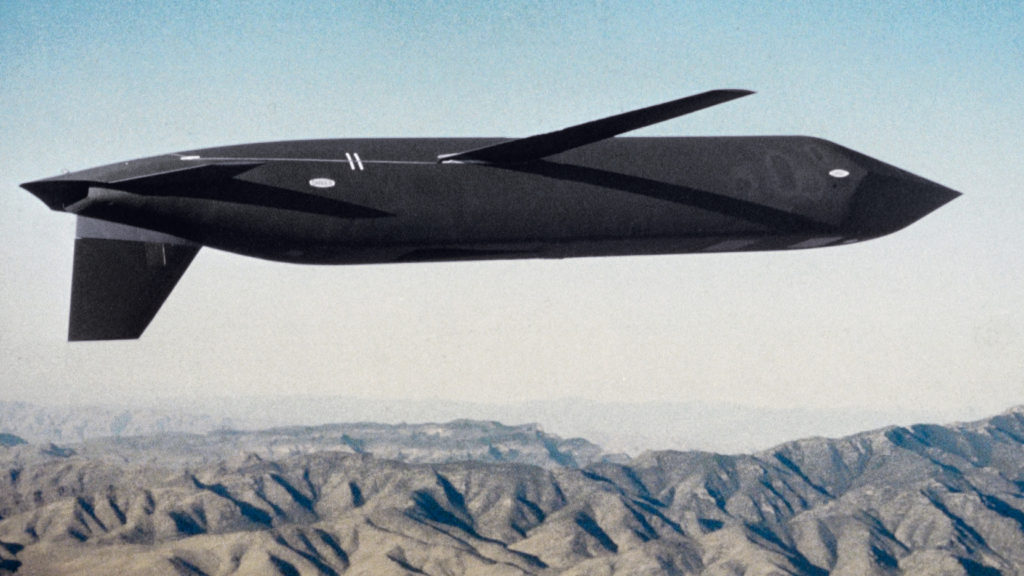
As you can seen in its image above, this missile was supposed to fly at very low altitude so that it would be hard to detect by ground radars due to tarrain masking, and would be hard to detect by airborne radars due to its stealthy shaping. In fact, a careful observation of its appearance will reveal that it was essentially designed as an upside down stealth aircraft. The exhaust that is covered less from up top in the B2 Spirit stealth bomber was covered less from down under in AGM-129. And the tail that is mounted on top in aircraft was mounted at the bottom in the AGM-129.
The AGM-129 was retired for compliance with the INF (Intermediate Range Nuclear Forces) treaty, the same treaty that led to retirement of ground launched Tomahawk, as well as the Pershing short range ballistic missile. Another example of a stealthy subsonic cruise missile is the AGM-158 JASSM cruise missile, and its anti ship version, the AGM-158 C LRASM. This missile, unlike the now retired AGM-129, is still in service.
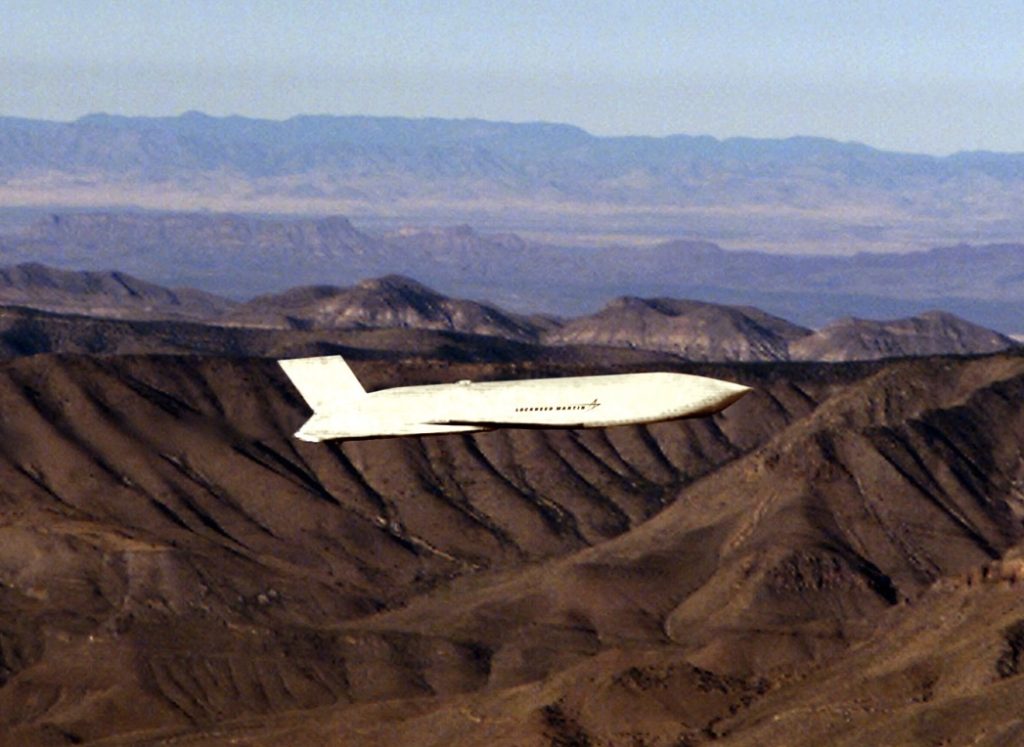
Yet another example of a stealthy subsonic cruise missile is the Naval Strike Missile developed by Knogsberg Defense. You can read about the missile’s stealth features in detail here. In contrast, the supersonic missiles like Brahmos, P-800, and P-270 Moskit, rely less on stealth and more on their high speed to prevent interception by the adversary.
Conclusion
Subsonic cruise missiles are not replaceable by their supersonic brethren. Instead, they serve a different purpose that cannot be served by supersonic cruise missiles, and thus complement and not supplement the supersonic missiles. Supersonic cruise missiles have their own advantages over subsonic missiles, which you can read in detail in this post by me. But most militaries are better off possessing a combination of subsonic and supersonic missiles. After having done all the tests for the Nirbhay subsonic cruise missile, India is going to start development of what it calls the LRLACM (Long Range Land Attack Cruise Missile), which will most likely be another subsonic cruise missile, basically an improved version of Nirbhay.
